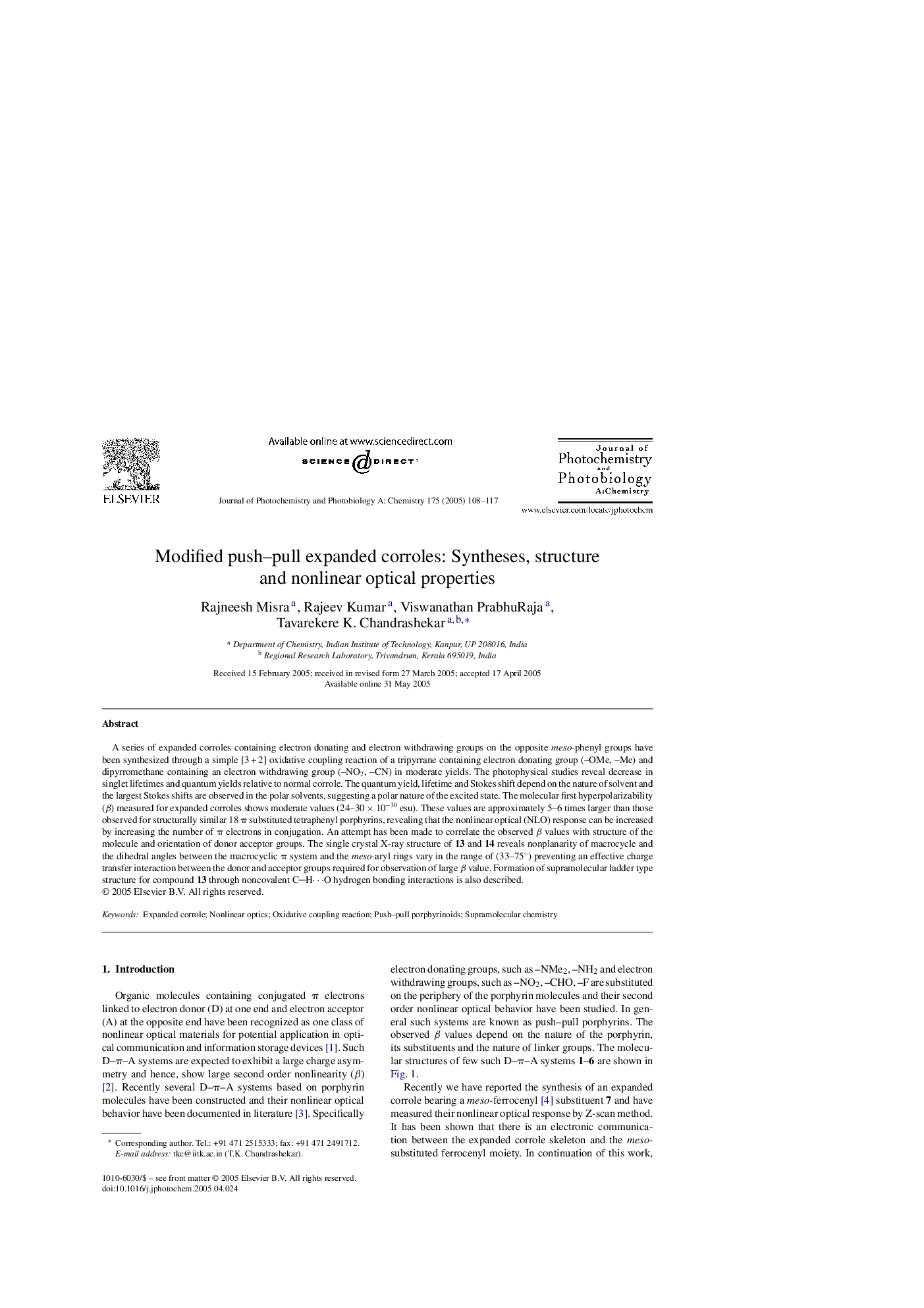| Article ID | Journal | Published Year | Pages | File Type |
|---|---|---|---|---|
| 9605463 | Journal of Photochemistry and Photobiology A: Chemistry | 2005 | 10 Pages |
Abstract
A series of expanded corroles containing electron donating and electron withdrawing groups on the opposite meso-phenyl groups have been synthesized through a simple [3 + 2] oxidative coupling reaction of a tripyrrane containing electron donating group (-OMe, -Me) and dipyrromethane containing an electron withdrawing group (-NO2, -CN) in moderate yields. The photophysical studies reveal decrease in singlet lifetimes and quantum yields relative to normal corrole. The quantum yield, lifetime and Stokes shift depend on the nature of solvent and the largest Stokes shifts are observed in the polar solvents, suggesting a polar nature of the excited state. The molecular first hyperpolarizability (β) measured for expanded corroles shows moderate values (24-30 Ã 10â30 esu). These values are approximately 5-6 times larger than those observed for structurally similar 18 Ï substituted tetraphenyl porphyrins, revealing that the nonlinear optical (NLO) response can be increased by increasing the number of Ï electrons in conjugation. An attempt has been made to correlate the observed β values with structure of the molecule and orientation of donor acceptor groups. The single crystal X-ray structure of 13 and 14 reveals nonplanarity of macrocycle and the dihedral angles between the macrocyclic Ï system and the meso-aryl rings vary in the range of (33-75°) preventing an effective charge transfer interaction between the donor and acceptor groups required for observation of large β value. Formation of supramolecular ladder type structure for compound 13 through noncovalent CHâ¯O hydrogen bonding interactions is also described.
Related Topics
Physical Sciences and Engineering
Chemical Engineering
Bioengineering
Authors
Rajneesh Misra, Rajeev Kumar, Viswanathan PrabhuRaja, Tavarekere K. Chandrashekar,
